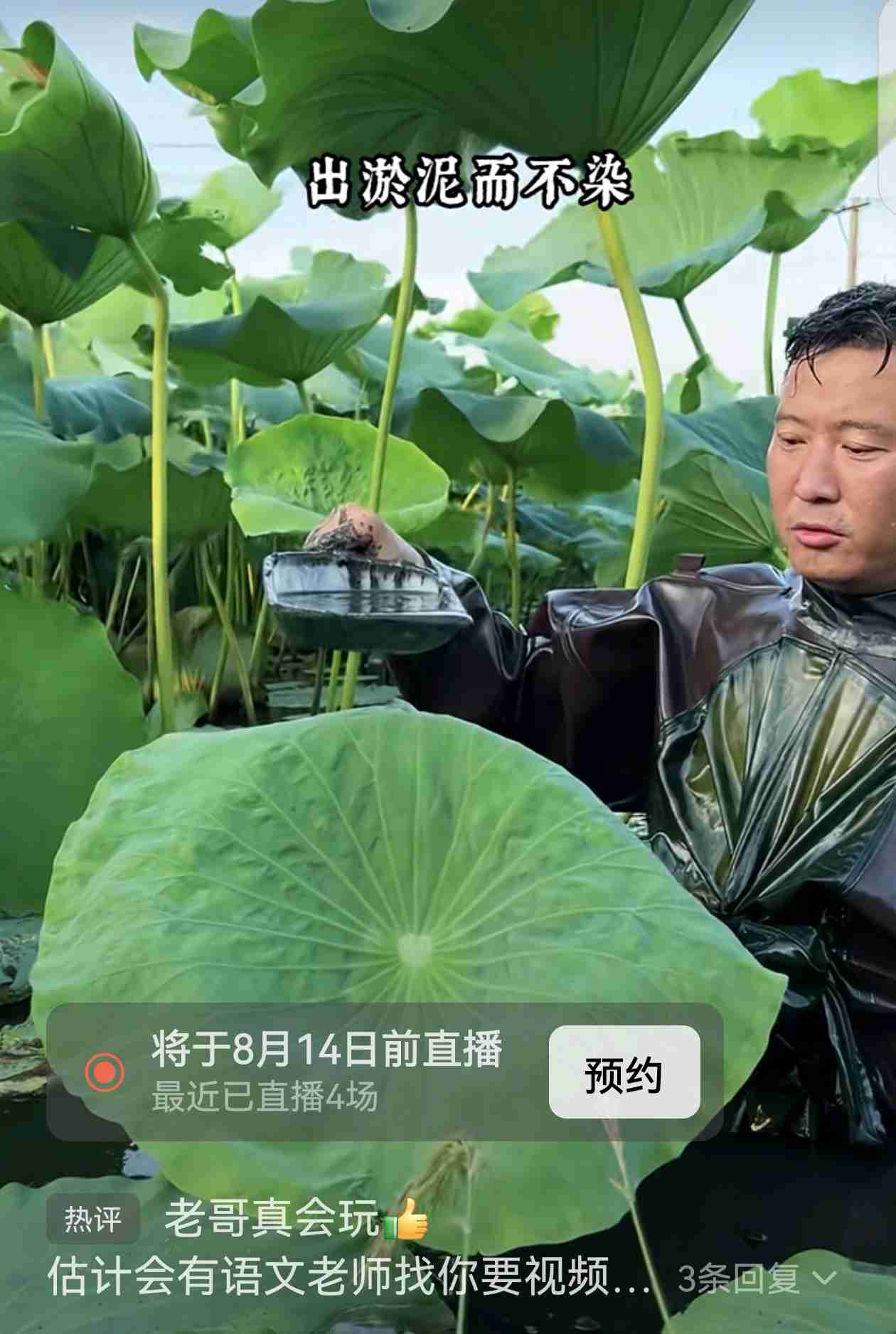

1. 出淤泥而不染:荷叶的超疏水自洁效应
荷叶“出淤泥而不染”源于其独特的微纳复合结构与化学组成。德国科学家巴特洛特(Barthlott)和中国科学院江雷院士团队的研究表明,荷叶表面布满微米级乳突(直径约10微米),每个乳突上又密布纳米级蜡晶(直径约200纳米),形成“小山包”状的粗糙结构。这些结构间的空隙充满空气,使水滴与叶面接触面积减少90%以上,接触角达160°以上,水滴因表面张力呈球形,滚动时可裹挟灰尘、淤泥等杂质,实现自清洁。这种“莲花效应”(Lotus Effect)已被应用于纳米自清洁涂料、抗菌衣物等领域。
2. 中通外直,不蔓不枝:莲茎的结构力学与生长调控
莲茎“中通外直”是其适应水生环境的进化结果:内部为中空气腔(通气组织),由薄壁细胞围成,可储存氧气、减轻重量,同时通过厚壁细胞(石细胞)增强机械支撑,使茎秆直立挺拔。“不蔓不枝”则与植物激素调控有关:莲茎顶端分生组织分泌的生长素(Auxin)抑制侧芽萌发,形成“顶端优势”,避免养分分散,确保能量集中用于纵向生长。这种结构既减少水流阻力,又最大化光合作用效率。
3. 藕断丝连:莲藕的螺旋导管与弹性纤维
“藕断丝连”的本质是莲藕导管的特殊结构。莲藕作为莲的地下茎,内部分布着螺旋状增厚的木质部导管(helical vascular bundles)。当藕被折断时,导管内壁的螺旋纹脱离,形成直径3-5微米的细丝,每根细丝由3-8根更细的微丝拧成,如同“植物弹簧”,弹性拉伸长度可达10厘米。此外,导管内壁分泌的粘液(含阿拉伯半乳聚糖等多糖)在断裂瞬间形成临时交联,如同“分子胶水”,进一步维持丝的连接。这种结构既保障水分运输,又赋予莲藕断裂后暂时“续命”的修复窗口。
1. Out of Mud Yet Unsoiled: Superhydrophobic Self-Cleaning of Lotus Leaves
The self-cleaning ability of lotus leaves arises from their micro-nano hierarchical structure and chemical composition. Studies by German scientist Barthlott and Chinese academician Jiang Lei reveal that lotus leaf surfaces are covered with micrometer-scale papillae (≈10 μm in diameter), each adorned with nanometer-scale wax crystals (≈200 nm in diameter), forming a “hill-like” rough structure. Air trapped in the gaps between these structures reduces the contact area between water droplets and the leaf surface by over 90%, resulting in a contact angle exceeding 160°. Water droplets form nearly spherical beads due to surface tension, rolling off while carrying dust and mud. This “Lotus Effect” has inspired applications in nano self-cleaning coatings and antibacterial fabrics.
2. Hollow Inside, Straight Outside; No蔓 No枝: Structural Mechanics and Growth Regulation of Lotus Stems
The “hollow inside, straight outside” structure of lotus stems is an adaptation to aquatic environments: the internal hollow aerenchyma (air cavity) stores oxygen, reduces weight, and is reinforced by sclerenchyma cells for mechanical support, keeping the stem upright. “No蔓 No枝” (no branching) is regulated by plant hormones: auxin secreted by the apical meristem inhibits lateral bud growth (apical dominance), ensuring energy is focused on vertical growth. This structure minimizes water resistance and maximizes photosynthetic efficiency.
3.藕断丝连: Helical Vascular Bundles and Elastic Fibers in Lotus Roots
The phenomenon of “藕断丝连” (silk remaining after lotus root breaks) stems from the unique structure of lotus root vascular bundles. Lotus roots (rhizomes) contain helically thickened xylem vessels. When broken, these vessels’ helical walls detach, forming 3–5 μm-diameter silk-like fibers, each composed of 3–8 finer microfibers twisted like a “plant spring,” stretchable up to 10 cm. Additionally, mucus (containing polysaccharides like arabinogalactan) secreted by vessel walls forms temporary cross-links at the break, acting as “molecular glue” to maintain fiber connection. This structure ensures water transport and provides a temporary “repair window” for the lotus root after damage.